what is the friend equation?
background
In my previous article, I discussed various equations used to estimate oxygen uptake during exercise. One in particular caught my fancy: The FRIEND equation, derived from the Fitness Registry and the Importance of Exercise National Database. Haven’t heard of the the FRIEND registry, yet? That’s okay, we’ll talk about what it is and how it’s being used to develop useful new tools for clinical and recreational exercise physiology.
What the heck is the friend registry? [2]
In 2014, a multi-institutional initiative was established, the primary objective of which was to establish normative cardiorespiratory fitness values in the United States across the lifespan. Eight facilities from across the US (Connecticut, Indiana, Illinois, Louisiana Maryland, North Carolina, Tennessee and Texas) participated. Basically, researchers merged the data from many, many VO2max tests into one large cohort, following a standardized format such that the final cohort could be easily analyzed.
Laboratories provided data on individuals who at the time of the test were without known cardiovascular disease or chronic obstructive pulmonary disease. Inclusion criteria were 1) participants be of age 20 years or older, 2) a maximal exercise test performed on a treadmill, 3) a peak respiratory exchange ratio (RER) of 1.00 or higher. Exclusion criteria were any tests that were terminated for abnormal clinical findings before reaching voluntary maximal effort.
The final cohort includes 7783 tests; 4611 on men, 3172 on women. That’s a fairly large N for such a time-intensive procedure. Most of the VO2max studies I’ve read include around 20-40 participants.
What have we learned already?
Well, for one thing, we have updated normative values for different age groups!
It has also given us some new cardiorespiratory fitness equations! Almost all VO2max equations have been derived by performing regression analyses on a group of individuals (this one included). This is fine and all, but generally yields an equation that is fairly useful for that population.If a study has 40 participants, the equation yielded probably works pretty well for those 40 people. That’s what sets this cohort apart; the sheer size and variety of the final dataset gives it a much greater likelihood of producing a predictive equation that is more generally applicable.
According to publication date, the first equation derived from the FRIEND cohort came in the form of a reference equation to predict VO2max based on physical characteristics (age, gender and weight) [3].
- VO2max (ml/kg/min) = 79.9 – (0.39 * age ) – (13.7 * gender) – (0.127 * weight)
- Age is in years
- Weight is in pounds
- Gender is given as Male = 0, Female = 1
- Standard error of the estimate = 7.2 ml/kg/min
The authors of this study also established a validation cohort, independent from the FRIEND cohort. The validation group had 1237 subjects and was of similar age, age range, BMI and proportion of males to females. Overall, the FRIEND equation did quite well in predicting VO2max when compared to direct measure. The table below summarizes the findings.
An overall percent prediction of 100.4 ± 22.4 is pretty darn good for an equation that simply takes physical characteristics into account. But what about an equation for a physical test that takes something like speed or grade into account?
I’m glad you asked. Kokkinos, et al. [4] used the FRIEND registry and regression analysis to do just that. They randomly selected 70% of the participants from the following age groups: <40, 40 to 50, 50-70 and ≥ 70 years. The remaining 30% were reserved for validation. They first had to decide which variable factored most heavily into determination of VO2max during a treadmill test. Their analysis yielded speed and grade as the most weight, with their final equation being
- VO2max (ml/kg/min) = speed * [0.17 + (fractional grade * 0.79)] + 3.5
- Where speed is in meters/minute and grade as a decimal (e.g. 0.05 for 5% grade)
Here’s where things get interesting. The authors then validated their equation against the remaining 30% of the cohort, and compared it’s accuracy to that of the ACSM equation utilizing a variety of testing protocols. They found the ACSM equations to overestimate VO2max with a percent error for the entire cohort of 21.4 ± 24.9, as opposed to the FRIEND equation’s 5.1 ± 18.3. The FRIEND equation was roughly four times more accurate. Something to consider is the fact the validation cohort was a subset of the entire FRIEND cohort, so additional validation with an independent cohort may be beneficial in the future.
And speaking of validation, a group of researchers out of Seoul just recently validated the new FRIEND equation in patients with coronary artery disease. Jang, et al. [6] did a direct comparison of measured VO2max, the FRIEND equation and ACSM’s equation and the results were pretty overwhelming. They found the ACSM equation overestimated CRF by 20% in men and by 16% in women. BUT, they found the FRIEND equation to accurately estimate CRF within a 1% error for men and women. ONE PERCENT ERROR. The really interesting thing is how the equation was derived from a group of individuals without cardiac disease [2], but it still ended being quite accurate for individuals with coronary artery disease.
So what?
That’s nice and all, but how can I use this information? Well, the most applicable use would be in graded exercise testing. I mean, I can’t be the only one who has done their own Bruce protocol on the treadmill or a progressive running test on the track. Perhaps a new field test all together could be created? Something like a warmup and strides followed by 8 minutes all-out (most athletes can only maintain VO2max effort for 7-10 minutes). Then use the speed and grade (which may be 0, if it’s on the track) to calculate a predicted VO2max. I don’t know, I’m just spit-balling here. The other application might be to calculate energy expenditure, similar to what I did in my previous post comparing VO2 consumption equations. However, this particular equation would need further validation at submaximal intensities. But such a validation would also allow it to be useful in submaximal exercise prescription. For example, if one were to use the equation to calculate a VO2max, they could stratify their training into different intensities based on this VO2max. And those stratifications can be translated into paces by solving the equation for speed. Kind of like this:
Anything above the predicted VO2max would theoretically be anaerobic. And again, this is all just presuming the FRIEND equation is at least somewhat valid at submaximal efforts. I haven’t tried this out for myself, yet. But with a new training block coming up, I’ll probably at least test it out. It’s at least fun to think about!
APPENDIX A: SUMMARY OF EQUATIONS
Myers, et al. [3]
- VO2max (ml/kg/min) = 79.9 – (0.39 * age ) – (13.7 * gender) – (0.127 * weight)
- Age is in years
- Weight is in pounds
- Gender is given as Male = 0, Female = 1.
- Standard error of the estimate = 7.2 ml/kg/min
- Predictive based on physical characteristics
Kokkinos, et al. [4]
- VO2max (ml/kg/min) = speed * [0.17 + (fractional grade * 0.79)] + 3.5
- Speed is in meters/minute
- Grade as a decimal (e.g. 0.05 for 5% grade)
ACSM equations [8]
- Running: VO2 (ml/kg/min) = (0.2 * speed) + (0.9 * speed * grade) + 3.5
- Walking: VO2 (ml/kg/min) = (0.1 * speed) + (1.8 * speed * grade) + 3.5
- Running equation for speeds > 5mph (12 min/mile)
- Speed in meters/min
- Grade in decimal (e.g. 5% grade -> 0.05)
REFERENCES
- Koutlianos N, Dimitros E, Metaxas T, Cansiz M, Deligiannis A, Kouidi E. Indirect estimation of VO2max in athletes by ACSM’s equation: valid or not?. Hippokratia. 2013;17(2):136-140.
- Kaminsky LA, Arena R, Myers J. Reference Standards for Cardiorespiratory Fitness Measured With Cardiopulmonary Exercise Testing: Data From the Fitness Registry and the Importance of Exercise National Database. Mayo Clin Proc. 2015;90(11):1515-1523. doi:10.1016/j.mayocp.2015.07.026
- Myers J, Kaminsky LA, Lima R, Christle JW, Ashley E, Arena R. A Reference Equation for Normal Standards for VO2 Max: Analysis from the Fitness Registry and the Importance of Exercise National Database (FRIEND Registry). Prog Cardiovasc Dis. 2017;60(1):21-29. doi:10.1016/j.pcad.2017.03.002
- Kokkinos P, Kaminsky LA, Arena R, Zhang J, Myers J. New Generalized Equation for Predicting Maximal Oxygen Uptake (from the Fitness Registry and the Importance of Exercise National Database). Am J Cardiol. 2017;120(4):688-692. doi:10.1016/j.amjcard.2017.05.037
- Kaminsky LA, Myers J, Arena R. Determining Cardiorespiratory Fitness With Precision: Compendium of Findings From the FRIEND Registry. Prog Cardiovasc Dis. 2019;62(1):76-82. doi:10.1016/j.pcad.2018.10.003
- Jang WY, Kang DO, Park Y, et al. Validation of FRIEND and ACSM Equations for Cardiorespiratory Fitness: Comparison to Direct Measurement in CAD Patients. J Clin Med. 2020;9(6):1889. Published 2020 Jun 17. doi:10.3390/jcm9061889
- Koutlianos N, Dimitros E, Metaxas T, Cansiz M, Deligiannis A, Kouidi E. Indirect estimation of VO2max in athletes by ACSM’s equation: valid or not?. Hippokratia. 2013;17(2):136-140.
- Thompson, W., Gordon, N. and Pescatello, L., 2010. ACSM’s Guidelines For Exercise Testing And Prescription. 8th ed. Philadelphia: Lippincott Williams & Wilkins, p.158.
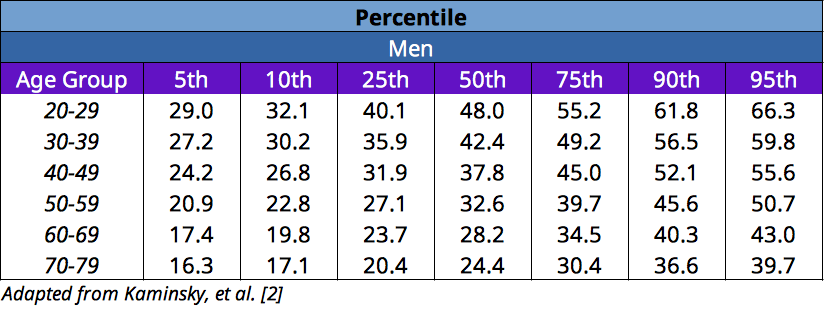
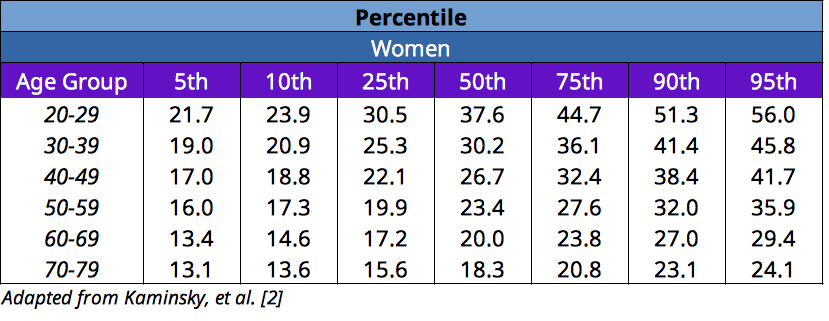
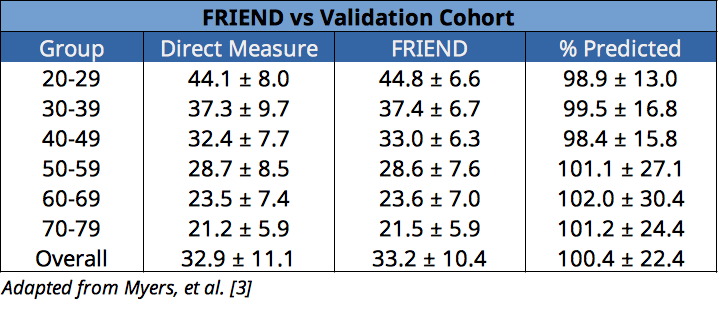
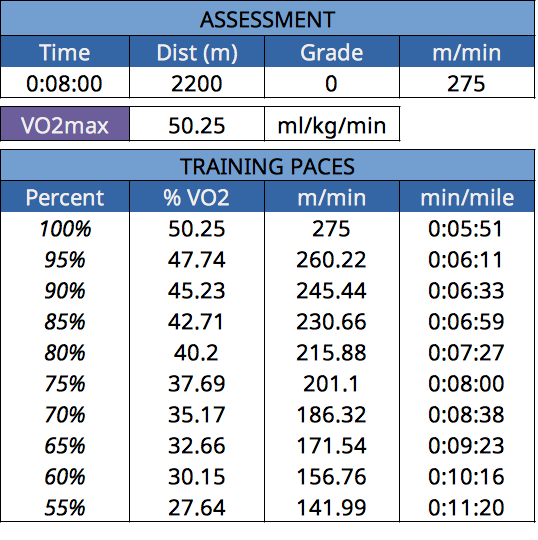



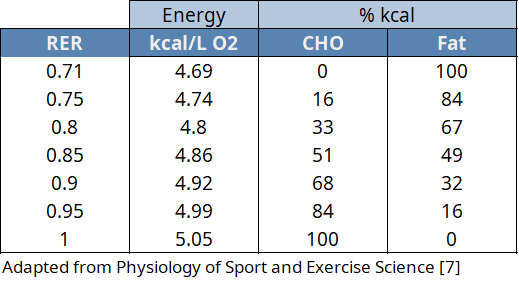




 Hike
Hike 

